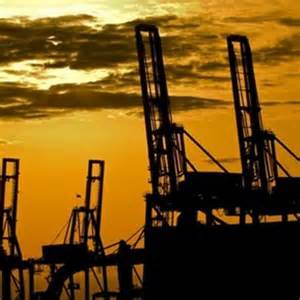Continuing its unique seven-year streak, the Port of New York and New Jersey once again achieved the coveted International Organization for Standardization (ISO) 14001 Certification for its Environmental Management System (EMS) this March.
According to ISO’s website, the 14001 standard “maps out a framework that a company or organization can follow to set up an effective environmental management system.” An ISO survey revealed that the majority of 14001-compliant organizations see their certification as a valuable tool for meeting legal requirements and improving environmental performance while bestowing a competitive edge and some financial benefits.
While the U.S. boasts 360 seaports, less than 10 are currently ISO 14001 certified.
Port Commerce Director, Rick Larrabee, noted that “obtaining and maintaining ISO 14001 Certification is a significant achievement, which identifies us as a Port committed to protecting the environment while also providing economic benefits to the region. I am very proud of our headquarters and marine terminal facility staff, whose dedicated efforts to continuously improve the total environmental effect of port operations and activities have earned in this achievement.”
William Nurthen, general manager of port environmental programs for The Port Authority of New York and New Jersey, notes that ISO 14001 certification is one of the most demanding achievements in the sphere of environmental management.
“Is ISO certification important?” he says. “Achieving ISO 14001 certification is the internationally recognized standard of excellence in environmental management. Our staff is so proud of it, that we list it on our business cards.”
Nurthen describes a rigorous process to achieve ISO 14001 certification. The initial certification demands a full audit of the applicant organization’s practices, after which, the organization must submit to and pass surveillance audits each year with a full recertification audit every three years. According to Nurthen, the annual surveillance audits are more limited in scope than a full recertification, but nonetheless robust. “Conformance with the ISO 14001 Standard is very exacting and difficult to achieve,” Nurthen states.” At any juncture — during full recertification or a surveillance audit — an organization can fail through what are called major or minor nonconformances. These nonconformances can be discovered here at our agency headquarters or at any of our marine terminal facilities. I’m proud to say that, this March, our port passed once again with zero major nonconformances and zero minor nonconformances.”
Yet Nurthen insists that the lion’s share of credit goes to his associate in port environmental programs, Atef Ahmed. Mr. Ahmed functions as the Port Commerce ISO Environmental Management Representative, a position each applicant organization must create and maintain to achieve 14001 certification. Says Ahmed, “In 2006, after completing an 18 month EMS training regimen sponsored by AAPA and EPA, we embarked on implementing our own EMS. The process took three years and involved a lot of hard work by our committed and very dedicated marine terminal facility staff before we felt our EMS was mature enough to seek ISO 14001 Certification in 2009. Not only did we achieve our initial certification that year, but we have maintained that certification through six subsequent surveillance and recertification audits, each with zero major and zero minor nonconformances.”
“Port Commerce maintenance staff at our marine terminal facilities are the true champions of the EMS,” says Ahmed. “They make recommendations for continuous environmental improvement in their operations and activities. They lead the way for implementing these recommendations.”The ISO Standard contains 17 elements to which the applicant entity’s EMS must conform. These 17 elements include:
QUICK FACTS
- development of an Environmental Policy;
- identification of Significant Environmental Aspects from operations;
- creation of Operational Controls, Objectives, and Targets to achieve continuous improvement in reducing these impacts;
- compliance with Legal and Other Requirements;
- conduct of Annual Internal Audits, with Corrective and Preventive Actions, and a Senior Management Review, Monitoring and Measurement, Document and Record Controls, as well as Internal and External Communications, Emergency Preparedness and Response and Competence Training and Awareness.
Failure to comply with any of the 17 elements results in a major or minor nonconformance.

